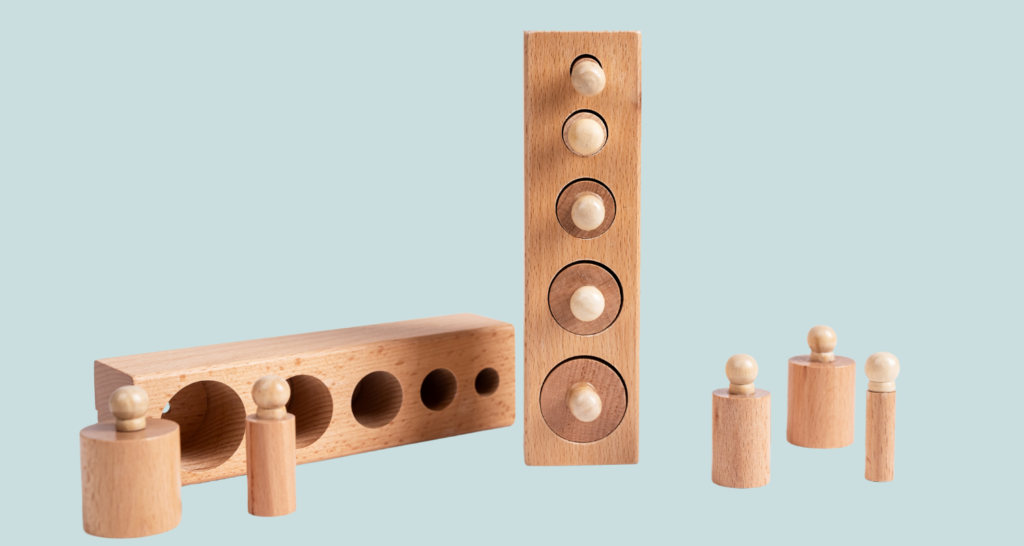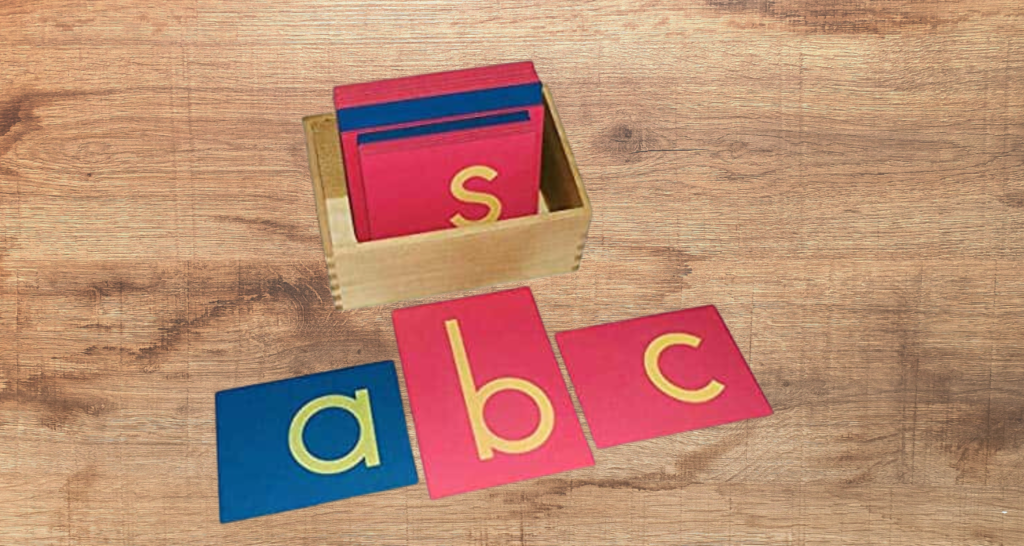Error control lies at the heart of the Montessori approach and enables children to be independent and confident in self-correction. Children develop not only practical skills by learning to identify and fix their mistakes but also build resilience, curiosity, and a growth mindset. In this article, find out why error control is so important, some neuroscience behind this idea, and ways of providing for error control in a Montessori setting.
What Is Error Control and Why Is It Crucial in Montessori Education?
Error control, as it is known in the Montessori system, refers to structured opportunities within an activity of learning where children are independent in detecting and correcting their errors themselves with no interference from the adults. Maria Montessori quoted that children learn better through practice and self-discovery. Each activity in the Montessori system is designed to facilitate the correction of their mistakes by themselves so that eventually they develop a sense of responsibility and achievement.
Error control:
- Supports Autonomy: Children learn to take care of themselves in terms of progress and learning from their achievements and mistakes; it helps in gaining a sense of self-independence.
- Builds Resilience and Patience: The process involves children viewing mistakes as part of the journey to excellence and not as some form of failure. This is helpful in building up their resilience.
- Develops Problem-Solving Capabilities: Letting children find and remedy errors themselves develops problem-solving abilities for later in their lives.
Montessori believed these outcomes provided a pathway for the child to become a lifelong learner. The controlled error within the exercises presented in this systematic way supports this aspiration of becoming reflective, motivated, and confident in their mode of learning.
Neuroscience and Error Control: How the Brain Learns from Mistakes
Modern neuroscience really supports the insights of Montessori to the effect that such learning is optimized when children engage in self-directed error detection and correction. It has been shown that: a. Memory and Error Recognition: The recognition and correction of errors improve memory retention and comprehension. If the child identifies his own mistake, the memory circuits of the brain are likely to consolidate information.
- Deep Learning Engagement: The brain likes success, but also the process of overcoming challenges is coupled with its reward. Releasing dopamine in error correction motivates a person to show intrinsic interest in and long-term engagement with learning.
- Consolidation of Neural Pathways: Repetition of self-corrective behavior strengthens the neural pathways associated with resilience, memory, and self-regulation. As children proceed with activities providing for error control, they build the brain’s neural pathways related to persistence and flexibility.
In a Montessori classroom, the principle of error control is deeply interwoven with such an understanding of cognitive development. Children not only learn how to approach errors constructively, but they internalize this process as one that is absolutely foundational to independent learning.
How to Integrate Error Control in Montessori-Inspired Activities
Following are some of the key ways you can integrate error control while preparing activities for your Montessori-inspired environment:
- Use Self-Correcting Materials
Self-correcting materials are a hallmark of Montessori activities. The materials are designed in such a manner that the errors become visible and naturally correctable. Following is a list of some commonly used Montessori tools implementing this approach:
- Cylinder Blocks: Each of the cylinders in this set goes into one and only one place. If a child places a cylinder mistakenly, it either wouldn’t fit or a companion slot could not be filled, indicating an error. The child adjusts until he finds the best fit.
Color Matching Games: Through reading and matching games, children match pictures or words of the same color. An example includes sets of word cards and image cards with colored dots on the back that are identical so children can verify a match without relying on an adult for confirmation.

- Geography Puzzle Maps: Montessori puzzle maps include a control map. This serves as a model of visual reference for the children against which they can match their learning geography. The children can have a look at it and check their work, making immediate corrections themselves, if need be.

- **Encourage Reflective Questioning
It is important that one learns to develop a habit of reflection during learning. Encourage children to ask themselves questions which will make them think about possibilities of alternative solution or method:
- “What could I try differently?”
- “Why do I think this piece didn’t fit?”
- “What have I learned from this activity so far?”
Reflection internalizes children’s learning and enhances critical thinking skills as children learn how to assess the reasons behind their choices.
- Withdrawal of Control of Error Devices Gradually
Control of error devices in Montessori teaching is based on gradual withdrawal of the control of error device in steps. For instance:
Key supportive elements for the child: – In early geography lessons, children work with a control map as a guide. In due course, they are encouraged to complete the map without any reference to this.
- Children may use operation cards in math that have the answer on the back of the card. They would begin to move to exercises with no built-in answer as they become more confident. 4. **Scaffolding of the Complex Tasks
As the child gets involved in increasingly complex activities, error control is introduced subtly: - During Language Learning: Pictures on word cards for reading and phonetic exercises will help the child learn to associate sounds with symbols. Immediate feedback from the pictures will allow the child to self-correct their mistakes.
In Practical Life Activities: The activities of pouring, spooning, and sorting give clear error cues. If the beads spill while the children are trying to pour them, for example, they should adjust their way to show greater precision.
Practical Examples of Montessori Error Control in Action
Following are some detailed examples of error control that take place in the Montessori activities. These demonstrate how the children gradually acquire the habit of self-correction:
1. Cylinder Blocks
The child will try to put in cylinders in a series of corresponding holes. When one cylinder is placed into an inappropriate hole, others will encourage one by not going in properly to reassess the placements. This develops spatial awareness, logic, and patience in a child.
2. Three-Part Cards for Language Development
The three-part cards in the Montessori nomenclature cards include a picture, a word card, and a labeled picture card. Children then match the word card to the picture card and get a visual confirmation of their correct matches. If they make a mistake, they can self-correct by comparing the pairs.
Wild Animals Flashcards: Discover Wildlife Wonders

3. Montessori Sandpaper Letters
These letters have tactile feedback that helps children trace and memorize the shapes of letters. If their tracing strays from the correct path, they are able to feel that difference in texture guiding them towards the right formation.

4. Math Operation Cards with Self-Checking
Simple addition or subtraction cards with answers on the reverse side, children can check their work. They work out the problem and then turn the card over to check the answer, thus building responsibility and self-drive in the child’s work.
5. Science Puzzles and Models
In science for instance, they may work with anatomy or botany puzzles, placing pieces according to an already labeled control chart. After some time elapses, children begin to match parts directly from memory, reinforcing both content knowledge and confidence in self-assessment.
Building a Positive Approach to Mistakes
One of the biggest positives about error control is that it reconfigures the mindset of children toward mistakes. Whereas conventionally, mistakes can be an embarrassing or frustrating affair, within a Montessori setting, mistakes are presented as an opportunity to get better. This framing is important in developing resilience and confidence.
Error control teaches children that mistakes:
- Are Normal: Kids come to know that committing errors is part and parcel of learning.
- Curiosity: They learn to view mistakes as opportunities to try alternatives-a spur to creativity and curiosity.
- Patience and Persistence: Children are more patient with themselves and persistent with their endeavors when they understand that mistakes are a normative part of the process.
Benefits of Error Control Beyond the Classroom
Self-correction skills learnt through error control in Montessori prepare the children for life beyond academics. The ability to recognize and reflect on mistakes and correct them is a valid life skill which enriches one’s life in:
- Emotional Intelligence: Children who learn to accept and address mistakes are better equipped to handle constructive criticism and adjust in social situations.
- Decision-Making: They start to become more reflective in their decision-making by weighing their choices against the consequences and developing the ability to think critically about the decisions that they make.
- Intrinsic Motivation: This helps children concentrate on internal improvement rather than external rewards, hence they learn self-drive and determination toward their personal goals.
Conclusion
Error control can be a potent tool in Montessori education for developing self-reliance, resilience, and love for learning. The educators ensure that error control infuses activities such that children can take ownership of their learning process with confidence. This will be the foundation to carry them through academic growth and allow them later in life to be adaptable and motivated, hence ready for complexities.
As Montessori herself expressed it, enabling children to self-correct, therefore learning from their mistakes, is not just crucial for learning but also developing an empowered, independent, capable spirit.

